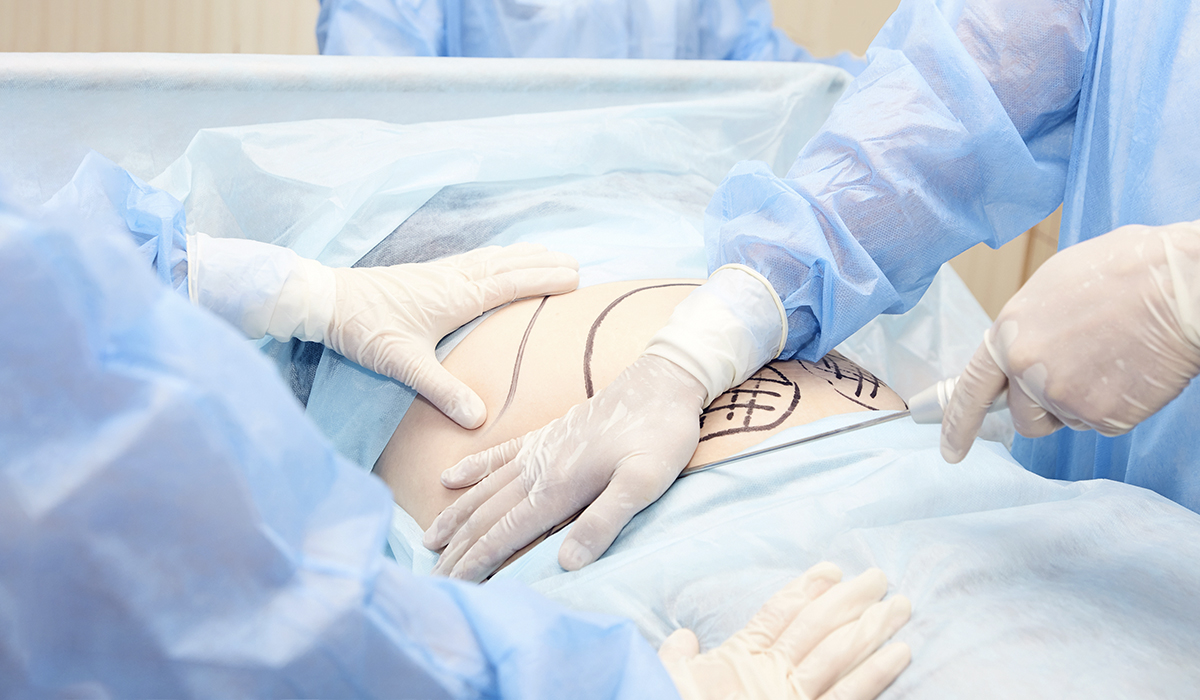Liposuction, the second most performed cosmetic surgery in 2018, sculpts the body’s silhouette by removing unwanted fat from areas such as the abdomen, waist, hips, buttocks, thighs, knees, upper arms, neck, and chin that don’t respond to diet and exercise. The procedure, which can be completed under local anesthesia with light sedation, typically involves the use of a thin tube known as a cannula, which is connected to a vacuum that suctions out the fat.
Although it’s important to understand how this technique works, it’s critical you know how to properly prepare for it, and appreciate what recovery will entail. This explainer explores the prep and rehabilitation process.
How to Prepare for Liposuction
Before any procedure, your board-certified plastic surgeon will provide instruction on how to prep. Following these directions ensures you achieve the desired results. Your surgeon may ask you to undergo a blood workup to verify whether you can safely go under general anesthesia. You will also have to pause smoking and certain medications, such as aspirin or blood thinners.
Arrange for a friend or family member to drive you home. The day of surgery, your surgeon will require you to abstain from eating or drinking for a specific period of time, typically 12 hours.
Recovery Timeline
Throughout your recovery, which can last several months, you can help your body’s natural healing process by eating nutritious foods, staying hydrated, resting, and taking regular walks. Try not to rush your recuperation by returning to work or hitting the gym too soon.
Immediately After
Generally, liposuction is an outpatient procedure, meaning you can walk out the same day with elastic bandages and/or a supportive compression garment. Unless there’s significant fat removal, it doesn’t typically require a hospital stay or utilizing an anesthesiologist. Whether conducted in your plastic surgeon’s office or a hospital, you’ll need someone to drive you home.
Several Days After
It’s equally as important to follow your plastic surgeon’s post-surgery instructions as the pre-surgery advice. He or she will explain how long you’ll need to wear the compression garment, which reduces inflammation and supports your body’s new contour.
In addition to garments and bandages, you may have small drains, which prevent fluid build-up, inserted at the site. Listen to your surgeon’s directions on how to care for these.
Experiencing moderate pain and soreness in the first few days following surgery is normal. Your surgeon will prescribe pain medication to ease the discomfort. This discomfort and the restrictions of your garment will prevent you from performing normal activities. Ensure you have help around the house for tasks requiring bending, lifting, or standing for long periods of time. Take this time to rest.
Although it’s important to understand how this technique works, it’s critical you know how to properly prepare for it, and appreciate what recovery will entail.
One to Two Weeks After
Pain and soreness should reduce dramatically a week or two post-operation. If you have a sedentary job, you can typically return to work after two weeks. If it demands constant standing, bending, and lifting heavy objects, it’s best to take additional time off to fully heal. Regardless of whether or not you resume work throughout this period, you’ll still be expected to wear your compression garment.
Three to Five Weeks After
Approximately one month after surgery, you should start to see the results of your liposuction. Your pain and soreness should have subsided. If you’re still feeling intense discomfort, you need to contact your surgeon. Spying slight swelling and bruising at the surgical site is normal. At four weeks, you can resume light exercise, but continue to avoid weight training or other heavy lifting.
Six Weeks & More After
Bruising and swelling should subside or disappear, however, it’s not uncommon for slight swelling to last a bit longer. Unless directed by your doctor, you will no longer need your compression garment, and shouldn’t have any activity restrictions. You can return to work and strength training. You’ll also be able to see the full results of your liposuction.
Dr. Anthony Buglino has performed more than 700 awake liposuction procedures, giving him the experience and expertise to answer any questions you may have about preparation and recovery. For more information, call (516) 864-0700. To determine if liposuction is right for you, schedule an appointment with Dr. Buglino today!




